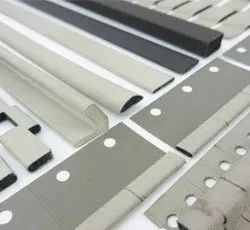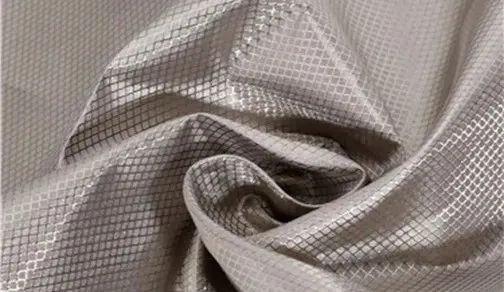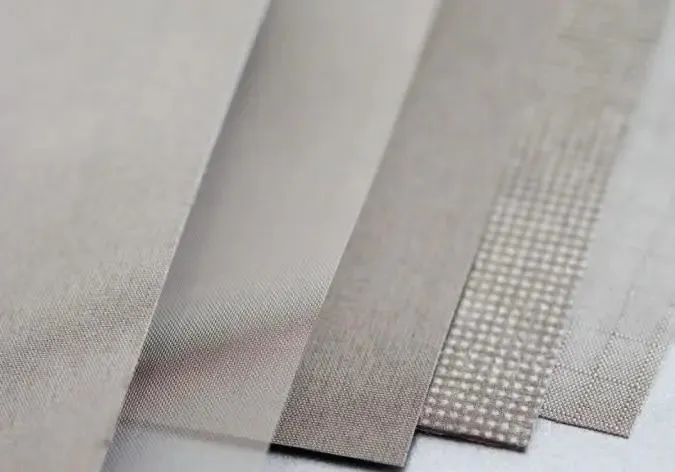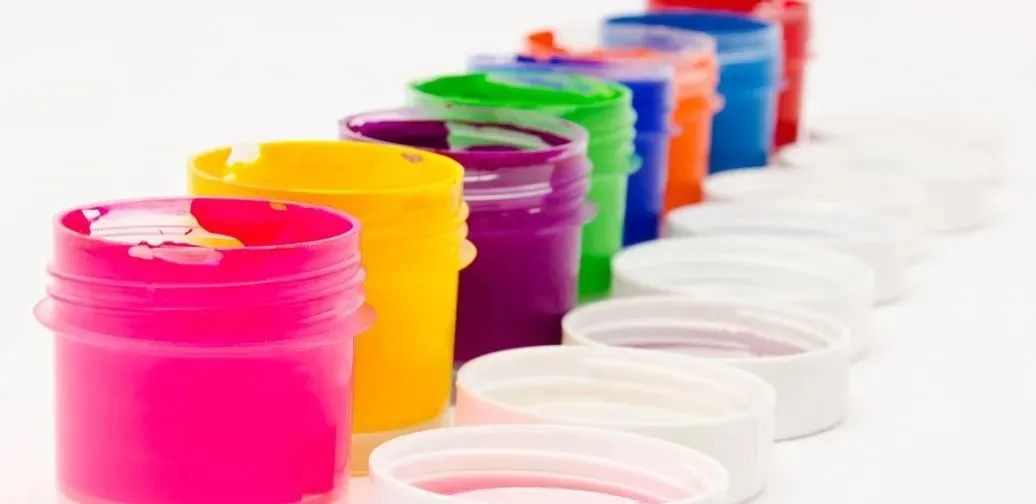Seven kinds of EMI electromagnetic shielding materialsIntroduction
With the rapid development of science, technology and electronics industry, various digital and high-frequency electronic and electrical equipment are required to Space radiates a large amount of electromagnetic waves of different wavelengths and frequencies, resulting in new environmental pollution: electromagnetic interference (EMI).

1: What is EMI
Electromagnetic waves will interact with electronic components and cause interference, which is called EMI (Electromagnetic Interference). For example, the common “snowflakes” on TV screens indicate that the received signal is interfered with.
When electronic equipment is working, it neither wants to be interfered by external electromagnetic waves, nor does it want to radiate electromagnetic waves to interfere with external equipment and cause radiation harm to the human body. This requires electromagnetic shielding to block the spread of electromagnetic waves. path. The electromagnetic attenuation of electromagnetic shielding is mainly based on the principle of reflection and absorption of electromagnetic waves.

2: Electromagnetic shielding materials
According to electromagnetic shielding materials, there are mainly three types: Major categories:
1) Metal type: directly select metal materials, such as beryllium copper, stainless steel, etc.;
2) Filling type: add a certain proportion of Conductive fillers make the material conductive. The base material can be silica gel, plastic and other materials. The conductive fillers can be metal sheets, metal powders, metal fibers or metallized fibers;
3) Surface coating and conductivity Coatings: Electroplating the substrate. Commonly used preparation methods include chemical gold plating, vacuum spraying, sputtering, metal spraying, and metal foil sticking.
1. Conductive rubber
Conductive rubber is a rubber material filled with metal fillers, which provides high conductivity, electromagnetic shielding, Moisture-proof sealing function. Each conductive rubber is made of silicone, silicone fluoride, EPDM or carbon fluoride-silicon fluoride and other adhesives and pure silver, silver-plated copper, silver-plated aluminum, silver-plated nickel, silver-plated glass, silver-plated Composed of conductive fillers such as lead or carbon particles
This material can be formed into sheet, molded, extruded and film shapes according to requirements. Standard shapes include: solid O-shaped bars, hollow O-shaped bars, solid D-shaped bars, hollow D-shaped bars, U-shaped bars, rectangular bars, hollow rectangular bars, hollow P-shaped bars, channel bars and molded conductive rubber formed parts, Molded D-Rings/O-Rings, various flanges, I/O gaskets.
Features and applications: It can reach 90 dB-120dB in the range of 20M-20GHz, and pure silver particles can even reach more than 120dB. It can play the role of shielding and environmental sealing, and is easy to install. Used in areas requiring excellent long-term electromagnetic shielding and high conductivity. It is widely used in communication equipment, information technology equipment, medical equipment, and industrial electronic equipment markets.
2. Conductive foam (conductive cloth liner)
Conductive cloth liner is composed of conductive layer and foam core, which can be processed into various shapes. The foam core can be The compressibility and resilience can adapt to the requirements of low closing force situations, and are widely used in EMI shielding requirements at the gaps between electronic equipment shells and cabinets.
Features and applications: It has low resistance and high resilience performance, can meet multiple opening and closing or plugging and unplugging scenarios, and provides stable grounding or shielding performance. Suitable for electromagnetic shielding, anti-static (ESD) and grounding of various electronic equipment. It can be widely used in electronic chassis, casings, indoor chassis, industrial design, notebook computers, mobile communication equipment, etc.
3. Conductive cloth
Conductive fiber cloth is made of fiber cloth (generally commonly used polyester fiber cloth) which is pre-processed and then electroplated with metal coating to give it metallic properties. It can be divided into: nickel-plated conductive cloth, gold-plated conductive cloth, carbon-plated conductive cloth, aluminum foil fiber composite cloth. The appearance is divided into plain and mesh.
Features and applications: Good electrical conductivity and shielding effect, good thermal conductivity, good ductility, easy to extrusion processing, good corrosion resistance and weather resistance, good anti-friction performance, anti-friction The number of times can reach 5,000,000 times.

Professional shielding work clothes that can be used for high-radiation work such as electronics and electromagnetics, and special shielding for shielding rooms Cloth; special cloth for shielding parts in IT industry, currently popular touch screen gloves, radiation-proof curtains, etc.
4. Metal EMI lining, clip lining and hook material beryllium copper reed
Clip-on EMI lining is made of carbon-filled silicone strips or silicone Monel wire on the strap and Ferrex wire on the neoprene provide EMI shielding, and the gusset is secured to corrosion-resistant stainless steel spring clips for easy installation, requiring no holes or fasteners.

Beryllium copper reeds are finger-shaped reeds made of special alloy beryllium copper. High-grade EMI shielding and elastic hook wipers are combined with low closing force characteristics. High-performance parameters of beryllium copper: high tensile strength, good anti-corrosion properties and electrical conductivity properties.�, making it an ideal EMI shielding material for use in a wide frequency band and can be used in a wide range of electronic equipment where EMI/RFI or ESD problems exist.
Application: Widely used in telecommunications, data communications, computers, electronics, network equipment, aerospace, military, automobiles, medical equipment and other fields.
5. Conductive adhesives and conductive coatings
Including conductive adhesives and conductive coatings. Conductive adhesives generally dope metal fillers such as silver particles or silver-plated copper particles into epoxy resin, silicone, or flexible polyisoethylene through a special process. It has unique comprehensive properties such as high shear strength, small thermal expansion coefficient, pure ions, and good thermal and electrical conductivity. Typical applications include bonding EMI shielding channels, windows or light-transmitting conductive mesh films to the permanent joints of the shielding. .
Features and applications: Conductive paint is generally sprayed on various plastic casings such as ABS, Noryl, and PVC to provide EMI shielding, anti-static protection, corona shielding and surface grounding. The fillers are divided into silver, Silver-coated copper, copper, nickel, etc., the adhesive is usually epoxy resin, polyurethane, etc., the conductivity can reach 0.015 ohm/sq, and can provide 60-80dB shielding for the chassis in the range of 30MHz-1GHz.
6. STM patch foam
SMT patch foam is a ground terminal that can be used in surface mounting technology and is one of the surface mounting components. In electrical/electronic equipment, it is an EMC countermeasure accessory that prevents malfunction due to unnecessary electromagnetic waves or reduces noise caused by EMI shielding materials. It is a ground terminal that can be soldered to the PCB.
Features: PCB that can be surface assembled at high speed, has suitable electrical conductivity, excellent heat resistance and grounding characteristics, and has excellent durability and reliability. Conductive elastic terminals are used for grounding. When electrical/electronic machines are impacted by external impacts or drops, SMT patch foam has excellent impact absorption characteristics and has the function of protecting internal accessories from buffering.
<img class="ue-image" src="http://www.yjtextile.com/wp-content/uploads/2023/pqz1wsaagab.jpg" title="640 (11).jpg" alt="640 (11).jpg" The powder is mixed with polymer resin through various processes and rolled into flexible sheet materials. It is converted into heat energy, potential energy and other forms of energy through hysteresis loss, dielectric loss, resistance loss and other mechanisms to achieve the effect of shielding and absorbing electromagnetic waves.
Application: Absorbing materials are mainly used in communications, electronics, aerospace, military industry, navigation, medical care, environmental protection and many industrial sectors that use microwaves and high frequencies. They are widely used in electronic digital products, wireless charging, RFID Radio frequency identification, mobile communication equipment, wireless equipment, office automation equipment (personal computers, TFT LCD, etc.), audio/video communication equipment terminals, digital switches, flexible circuit boards, high-speed CPU chips, image processors, oscillation chips, storage chips, High-speed signal line speed, shielded inner shell, high-speed microprocessor, etc.

Three: Upgrading Trend of Electromagnetic Shielding Materials
Electromagnetic shielding materials will have higher shielding efficiency, wider shielding frequency, With the development in the direction of better comprehensive performance, the innovative applications of various new materials in electromagnetic shielding will receive more development. In the future technological development, electromagnetic shielding will develop towards aspects such as good electrical conductivity, simple processing technology, high cost performance, and suitable for mass production. In the future, more and more types of electronic equipment will be included in electromagnetic compatibility management standards, and electromagnetic compatibility standards will become increasingly strict. It is foreseeable that the continuous upgrading trend of electromagnetic device process materials will be a definite direction.
Recently, a new shielding technology has emerged – conformal shielding. Different from the traditional mobile phone EMI shielding method that uses metal shielding covers, conformal shielding technology completely integrates the shielding layer and the package. , the module itself has a shielding function. After the chip is mounted on the PCB, there is no need to add an external shielding cover and does not occupy additional equipment space. It is mainly used for SiP module packaging such as PA, WiFi/BT, Memory, etc. To isolate the interference between the internal circuit of the package and the external system.
Conformal shielding technology can solve the EMI interference inside the SiP and the surrounding environment. It has almost no impact on the package size and weight. It has excellent electromagnetic shielding performance and can replace large-sized metal shields in the future. It is expected to become popular with the demand for SiP technology and equipment miniaturization.
Shenzhen Xinnuocheng Technology Co., Ltd., a member of Die Cutting House, is a professional electronic material solution integrating R&D, production and sales. Solution Provider is a national high-tech manufacturer. The company’s products are mainly EMI electromagnetic shielding materials, covering “conductive cloth, all-round conductive sponge, wrapped conductive foam, copper aluminum foil, buffer foam, double-sided tape, etc.; the products are widely used Used in electronic products in many fields such as mobile phones, tablets, laptops, aerospace and military industry, automotive new energy, smart wearables, etc.






